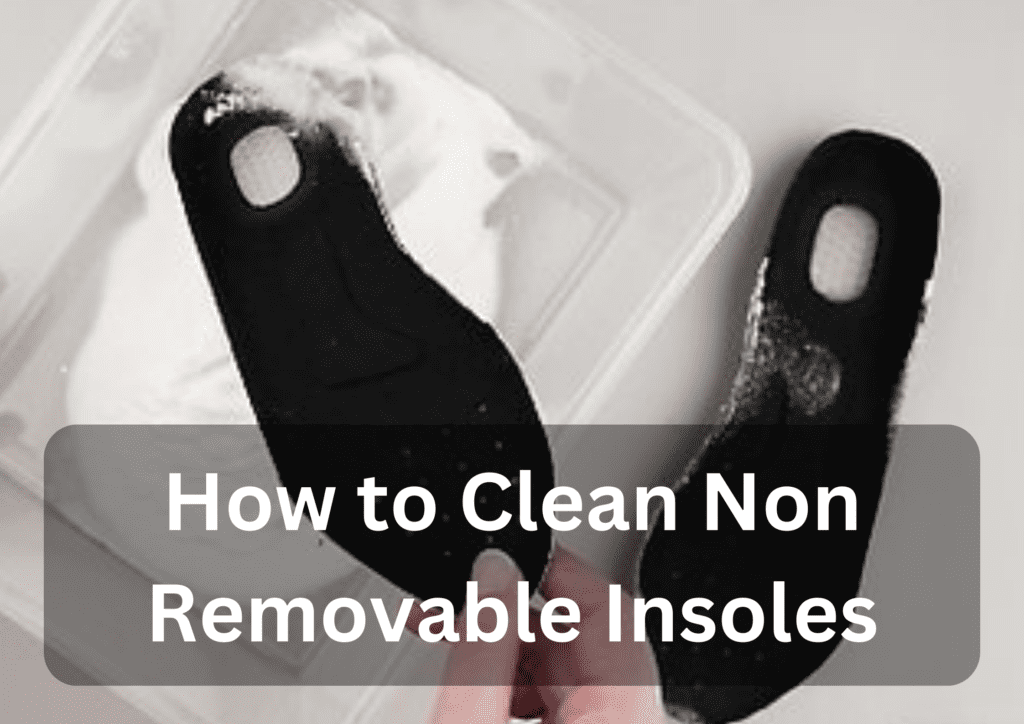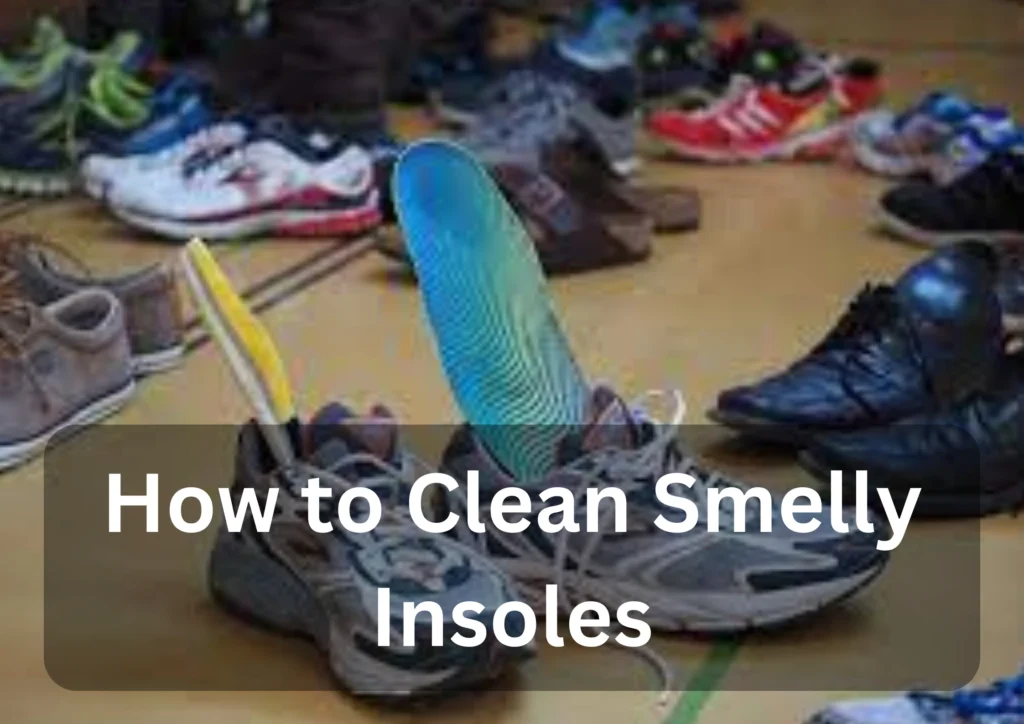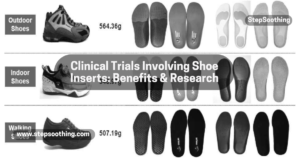Cleaning non-removable insoles can be a daunting task, but it is essential to keep your shoes looking and smelling fresh. Non-removable insoles are usually glued to the inside of the shoe, making them difficult to remove for cleaning. However, with the right tools and techniques, you can effectively clean your non-removable insoles without damaging them.
One of the best ways to clean non-removable insoles is to use warm water and soap. Take the insoles out of your shoes and soak them in warm water with some soap to get rid of all stains and dirt on the surface of your insoles. Make sure that you use mild soap, as it will not harm your insoles. After soaking them in warm water with soap, rinse them off thoroughly with clean water.

Another effective way to clean non-removable insoles is by scrubbing them with soap and water. Use a mild soap and avoid harsh chemicals or solvents. Once you have scrubbed them with soap and water, you can rinse them off with tap water. It is important to note that you should not submerge your shoes in water, as this can damage the shoes and the insoles.
Understanding Insoles
Non-removable insoles are an integral part of any shoe, providing cushioning and support to the feet. They are typically made of foam, gel, or other materials that absorb shock and reduce pressure on the feet. However, they can also become dirty and smelly over time due to sweat, dirt, and bacteria buildup.
1. Types of Non-Removable Insoles
There are several types of non-removable insoles available in the market, each with their unique features and benefits. Some of the most common types include:
- Memory foam insoles: These insoles conform to the shape of the feet, providing customized support and comfort.
- Gel insoles: These insoles provide excellent shock absorption and are ideal for people who spend long hours on their feet.
- Orthotic insoles: These insoles are designed to correct foot problems such as flat feet, plantar fasciitis, and heel spurs.
2. Benefits of Regular Cleaning
Regular cleaning of non-removable insoles is essential for maintaining foot hygiene and prolonging the life of the shoes. Some of the benefits of regular cleaning include:
- Preventing odor: Dirty insoles can harbor bacteria and fungi, leading to foul smells and foot infections. Regular cleaning can help eliminate these odors and prevent infections.
- Improving comfort: Clean insoles provide better cushioning and support, reducing foot fatigue and pain.
- Prolonging shoe life: Dirty insoles can cause the shoes to deteriorate faster, reducing their lifespan. Regular cleaning can help preserve the shoes and save money in the long run.
Overall, understanding the types of non-removable insoles and the benefits of regular cleaning can help individuals maintain foot hygiene and prolong the life of their shoes.
Pre-Cleaning Preparation
Before starting the cleaning process, it is important to gather all the necessary materials. This will ensure that the cleaning process is efficient and effective. Here are some materials that you will need:
1. Gathering Necessary Materials
- Soft-bristled brush: A soft-bristled brush will help in removing any loose dirt or debris from the insoles. It is important to use a soft-bristled brush to avoid damaging the insoles.
- Mild soap: A mild soap is ideal for cleaning non-removable insoles. Avoid using harsh chemicals or solvents as they can damage the insoles.
- Water: Water is essential for cleaning the insoles. Use tap water as it is readily available and safe to use.
- Lint-free towel: A lint-free towel is ideal for drying the insoles after cleaning. It is important to use a lint-free towel to avoid leaving any fibers on the insoles.
2. Removing Surface Dirt
Before cleaning the insoles, it is important to remove any surface dirt or debris. This will make the cleaning process easier and more effective. Here are some steps to follow:
- Use a soft-bristled brush to remove any loose dirt or debris from the insoles. Be sure to reach all the hard-to-reach places.
- Tap the shoes to remove any remaining dirt from inside the shoe. Be sure to reach all the corners and crevices.
- Use a damp cloth to wipe the insoles. This will help in removing any remaining dirt or debris.
By following these steps, you will be able to prepare the non-removable insoles for the cleaning process.
Cleaning Process
Cleaning non-removable insoles is an essential part of maintaining foot hygiene and extending the life of your shoes. The cleaning process involves applying cleaning solutions, scrubbing techniques, and deodorizing the insoles. Here are the steps to follow:
1. Applying Cleaning Solutions
The first step in cleaning non-removable insoles is to apply a cleaning solution. A mild soap and water solution is the most effective way to clean insoles. Mix a small amount of mild soap with water and apply the solution to the insoles with a soft-bristled brush.
2. Scrubbing Techniques
After applying the cleaning solution, use a soft-bristled brush to scrub the surface of the insoles gently. Be sure to reach all the hard-to-reach places, such as the edges and corners. Avoid using harsh chemicals or solvents that can damage the insoles.
3. Deodorizing the Insoles
Once you have scrubbed the insoles, it’s time to deodorize them. Baking soda is a natural deodorizer that can help eliminate odors from your insoles. Sprinkle a small amount of baking soda on the insoles and let it sit for a few hours. Afterward, use a soft-bristled brush to remove any excess baking soda.
Regular cleaning of non-removable insoles is essential for maintaining proper foot hygiene and extending the life of your shoes. By following the steps outlined above, you can keep your insoles clean and fresh-smelling.
Drying and Maintenance
1. Proper Drying Methods
After cleaning the non-removable insoles, it is important to dry them properly to prevent any damage to the material. The following methods can be used for drying non-removable insoles:
- Air Drying: The most effective method is to air dry the insoles. Simply place them in a well-ventilated area and let them dry naturally. This method is gentle on the material and prevents any damage.
- Hairdryer: If you want to dry the insoles quickly, you can use a hairdryer. However, make sure to use a low heat setting to prevent any damage to the material. Hold the hairdryer at a distance of at least 6 inches from the insoles and move it around to dry them evenly.
- Stuffing with Paper: Another effective method is to stuff the insoles with paper towels or newspaper. This method helps to absorb the moisture and speed up the drying process.
2. Preventive Care Tips
To maintain the cleanliness and freshness of non-removable insoles, it is important to take preventive care measures. The following tips can help:
- Use Socks: Wearing socks can help to absorb sweat and prevent it from accumulating on the insoles. This can help to prevent bad odor and prolong the life of the insoles.
- Use Foot Powder: Applying foot powder can help to absorb moisture and prevent bad odor. Simply sprinkle some powder on the insoles before wearing shoes.
- Store in a Dry Place: When not in use, store the shoes in a dry and well-ventilated area. This can help to prevent moisture buildup and prevent the growth of bacteria and fungi.
By following these drying and maintenance tips, you can keep your non-removable insoles clean, fresh, and long-lasting.
Read More



Frequently Asked Questions (FAQs)
Yes, using a mild soapy solution and a soft brush can effectively clean non-removable insoles without causing damage.
Avoid harsh chemicals and excessive moisture. Stick to gentle cleaners to prevent potential damage to the insole material.
It’s generally not recommended, as the machine can be too harsh. Hand-cleaning with care is a safer approach.
Regular cleaning is advisable, especially if they accumulate dirt or odors. Aim for cleaning every few weeks or as needed.
Yes, sprinkling baking soda or using specialized insole sprays can help neutralize odors and keep your insoles fresh.



